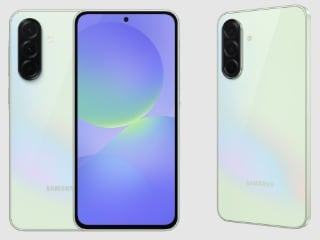- Home
- Mobiles
- Mobiles News
- Sony's 200 Megapixel LYTIA 901 Sensor Announced With AI Processing, 4x In Sensor Zoom
Sony's 200-Megapixel LYTIA 901 Sensor Announced With AI Processing, 4x In-Sensor Zoom
Oppo Find X9 Ultra and Vivo X300 Ultra may debut the new 200-megapixel Sony LYTIA 901 sensor.

Photo Credit: Sony
The LYTIA 901 is Sony's first 200-megapixel smartphone image sensor
Sony Semiconductor Solutions Corporation has officially introduced the LYTIA 901, its first 200-megapixel image sensor for smartphones. The new sensor, previously known as IMX09E during development, is built on a 1/1.12-type large-format design and uses 0.7-micron pixels. Sony confirms that mass-production shipments will begin in November 2025. The LYTIA 901 is positioned to power next-generation flagship phones and is expected to compete with existing 200-megapixel platforms already used in the industry.
Sony's 200-Megapixel LYTIA 901 Sensor With AI Processing, 4x In-Sensor Zoom Unveiled
The LYTIA 901 features a Quad-Quad Bayer Coding layout, where 16 pixels of the same colour are grouped. This structure is said to allow the sensor to capture high-resolution detail while maintaining strong light sensitivity. During regular photography, the 16-pixel cluster behaves like a single larger pixel, which helps in low-light conditions. When zooming, the sensor uses a remosaicing process to restore a normal pixel arrangement and recover fine detail.
Sony has integrated an AI-based remosaicing circuit directly inside the sensor. This is the first time such a system has been built into a mobile CMOS sensor, according to the company. The AI processing helps reconstruct difficult high-frequency details such as small patterns and text. This logic also helps enable rapid processing and supports up to 30 frames per second video capture at 4x zoom in 4K resolution.
For dynamic range, the LYTIA 901 uses several HDR systems. Dual Conversion Gain HDR is claimed to read the sensor at different gain levels within a single frame, while Fine12bit ADC is said to increase the bit depth used during conversion. Sony also includes Hybrid Frame HDR, which blends short-exposure frames with DCG data. Together, these technologies achieve a dynamic range of more than 100dB, which helps retain detail in both bright highlights and deep shadows.
Sony adds that all future LYTIA products will follow a unified naming pattern beginning with this release. The detailed specifications list a maximum output of approximately 200 effective megapixels, multiple pixel-binned modes such as 50-megapixel and 12.5-megapixel output, and support for high-frame-rate 4K recording. The sensor also offers all-pixel autofocus and a range of hardware zoom levels up to 4x in-sensor zoom.
The company notes that the LYTIA 901 is designed to improve low-light performance, enhance tonal accuracy, and deliver cleaner image data for mobile processors to handle. Reported use-case examples include stage and concert photography, where distant subjects and mixed lighting often create difficulties for current sensors.
According to industry reports, the Oppo Find X9 Ultra and the Vivo X300 Ultra are expected to be among the first smartphones to adopt the new LYTIA 901 when they launch in 2026. Sony has not confirmed specific partner devices but has stated that the sensor is already shipping to manufacturers.
Get your daily dose of tech news, reviews, and insights, in under 80 characters on Gadgets 360 Turbo. Connect with fellow tech lovers on our Forum. Follow us on X, Facebook, WhatsApp, Threads and Google News for instant updates. Catch all the action on our YouTube channel.
- Samsung Galaxy Unpacked 2025
- ChatGPT
- Redmi Note 14 Pro+
- iPhone 16
- Apple Vision Pro
- Oneplus 12
- OnePlus Nord CE 3 Lite 5G
- iPhone 13
- Xiaomi 14 Pro
- Oppo Find N3
- Tecno Spark Go (2023)
- Realme V30
- Best Phones Under 25000
- Samsung Galaxy S24 Series
- Cryptocurrency
- iQoo 12
- Samsung Galaxy S24 Ultra
- Giottus
- Samsung Galaxy Z Flip 5
- Apple 'Scary Fast'
- Housefull 5
- GoPro Hero 12 Black Review
- Invincible Season 2
- JioGlass
- HD Ready TV
- Laptop Under 50000
- Smartwatch Under 10000
- Latest Mobile Phones
- Compare Phones
- Poco F8 Ultra
- Poco F8 Pro
- Huawei Mate 80 RS Master Edition
- Huawei Mate 80 Pro Max
- Huawei Mate 80 Pro
- Huawei Mate 80
- Huawei Mate X7
- Honor 500
- Asus ProArt P16
- MacBook Pro 14-inch (M5, 2025)
- Poco Pad M1
- Poco Pad X1
- Honor Watch X5
- Huawei Watch Ultimate 2
- Acerpure Nitro Z Series 100-inch QLED TV
- Samsung 43 Inch LED Ultra HD (4K) Smart TV (UA43UE81AFULXL)
- Asus ROG Ally
- Nintendo Switch Lite
- Haier 1.6 Ton 5 Star Inverter Split AC (HSU19G-MZAID5BN-INV)
- Haier 1.6 Ton 5 Star Inverter Split AC (HSU19G-MZAIM5BN-INV)












